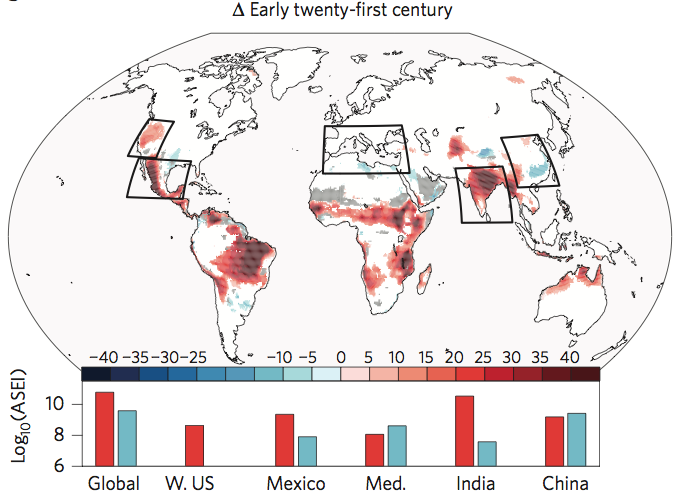Climate change is such a wretched foe that it could be worsening the ground-level effects of the very thing that caused it: air pollution.
New research reveals that a build-up of greenhouse gases threatens to thicken the clouds of haze that blanket many parts of the world.
Radical climate shifts can alter air circulation and precipitation, both of which affect air pollution levels. That’s because rain and snow can wash pollution out of the skies, while winds can disperse thick clouds of it. Stagnant air days, on which precipitation levels are low and winds are calm, are often smoggy days—assuming that engines are busily combusting and power plants are frantically burning fuel nearby.
Stanford University researchers wanted to forecast whether changes underway in the climate would alleviate or worsen the world’s air pollution woes.
“Potential impacts over India, Mexico, and the Western U.S. are particularly acute owing to the intersection of large populations and increases in the persistence of stagnation events, including those of extreme duration.”
“Stagnation is a normal thing,” says Daniel Horton, a postgraduate researcher at Stanford. “We have stagnation now; we’ve always had stagnation. But with increasing greenhouse gas emissions, the occurrence of stagnation will either increase or decrease in different places.”
So Horton and his colleagues used an ensemble of climate models to forecast when and where stagnant conditions would prevail around the world as the globe continues to warm.
“We’re not studying air pollution per se,” he says. “We’re studying the weather events and the meteorology behind air pollution.”
For most of the globe, including many of its most polluted places, the results of the modeling were chest-tighteningly discouraging.
“Some of the world’s largest population centers, like India and China, happen to also be places that we see significant changes in terms of the increasing frequencies [of stagnant air days],” Horton said. “These are places that already have very bad air quality problems.”
The researchers’ findings suggest that population-congested parts of the Western United States are also expected to suffer worsening bouts of air pollution as the climate changes.
“Our analysis projects increases in stagnation occurrence that cover 55% of the current global population, with areas of increase affecting ten times more people than areas of decrease,” the scientists wrote in a paper describing their findings, which was published Sunday in Nature Climate Change.
“Potential impacts over India, Mexico, and the Western U.S. are particularly acute owing to the intersection of large populations and increases in the persistence of stagnation events, including those of extreme duration,” they wrote. “Robust decreases are few and isolated in the late twenty-first century, with pockets of more frequent pollutant-dispersing conditions over the southern Arabian Peninsula, central Argentina, South Africa and eastern China.”
Red in the following chart reveals areas where the number of annual stagnant air days is expected to rise during the coming two decades, worsening air pollution. The scant patches of blue show areas where the number of stagnant days is expected to decline.

(Chart: Nature Climate Change)
Of course, this climate-changing consequence of fossil fuel burning will only be an issue if the world continues to pump fossil fuel pollution into the skies.




